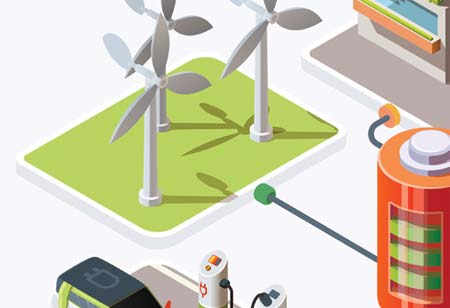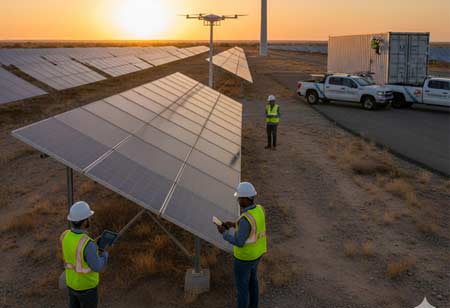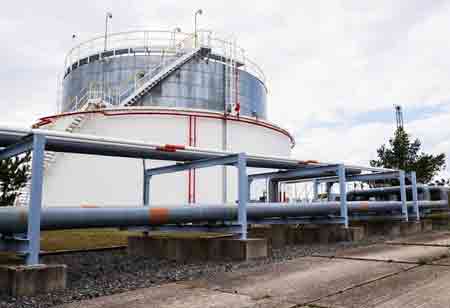Thank you for Subscribing to Energy Business Review Weekly Brief
Energy Storage Solutions for Renewables Integration in APAC
The Asia-Pacific (APAC) region has been at the forefront of the worldwide shift toward renewable energy experience.

By
Energy Business Review | Tuesday, November 19, 2024
Stay ahead of the industry with exclusive feature stories on the top companies, expert insights and the latest news delivered straight to your inbox. Subscribe today.
The Asia-Pacific (APAC) region has been at the forefront of the worldwide shift toward renewable energy experience. The nations within this region increasingly rely on wind, solar, and other renewable energy sources, driven by their ambitious clean energy objectives and abundant renewable resources. However, the intermittent nature of these sources poses a substantial challenge when integrating them into the grid. Addressing this challenge is the crucial role of energy storage, which becomes indispensable for preserving grid stability and optimizing the utilization of renewable energy sources.
Renewable energy sources exhibit inherent variability, notably in wind and solar power. Due to their dependence on weather conditions, these sources can experience substantial fluctuations in output daily and yearly. This variability poses operational challenges for grid operators, who must continually adjust the energy supply to align with demand.
During periods of heightened wind or abundant sunlight, renewable energy generation may exceed the immediate demand, potentially leading to system instability or the need to curtail excess generation. Conversely, during periods of low sunlight or calm winds, the renewable energy output may fall short of meeting demand, necessitating the deployment of backup generators fueled by conventional fossil sources.
Renewable energy requires careful management and strategic planning by grid operators to ensure a reliable and stable power supply that aligns with fluctuating demand patterns.
Energy storage technologies play a crucial role in addressing the intermittent nature of renewable energy sources and ensuring the electrical grid’s stability. These technologies function akin to rechargeable batteries, capturing surplus renewable energy during periods of abundance and releasing it strategically when demand necessitates. This mitigates fluctuations in power supply by absorbing excess generation during peak periods and discharging stored energy during low generation, thereby fostering a more consistent and reliable power supply. Further, by enabling the storage of excess renewable energy, these technologies minimize curtailment, facilitating a higher integration of renewables into the grid. Energy storage enhances grid stability by offering rapid-response power to maintain frequency and voltage stability, particularly in the face of abrupt changes in generation or demand.
The Role of Energy Storage
Energy storage technologies, including batteries, pumped hydro storage, and advanced energy storage systems, are pivotal in addressing the challenges associated with renewable energy integration in the APAC region. Here are some key roles that energy storage systems play:
Grid Stability and Reliability: Energy storage systems act as a buffer by storing excess energy generated during high renewable energy production periods. This stored energy can be released during periods of low output, ensuring a steady and reliable power supply to the grid.
Peak Load Management: Energy storage helps manage peak electricity demand by providing additional power when demand is high. This supports the grid’s stability and reduces the need for conventional fossil fuel-based power plants to meet peak demand, contributing to a cleaner and more sustainable energy mix.
Integration of Variable Renewable Energy: By smoothing out the fluctuations in energy production from variable renewable sources, energy storage systems enable a more seamless integration of solar and wind power into the grid. This helps overcome the mismatched supply and demand challenges, ensuring a continuous and reliable energy supply. .
Microgrid Support: Energy storage is integral to developing microgrids, especially in remote or off-grid areas. These microgrids, powered by renewable energy sources and supported by energy storage, provide a sustainable and reliable power source for communities not connected to the primary grid.
Grid Decentralization: Energy storage facilitates the transition toward a more decentralized energy system by efficiently integrating distributed renewable energy resources. This decentralization enhances energy resilience and reduces the grid’s vulnerability to centralized failures.
The APAC region presents a diverse landscape in the energy storage market, characterized by countries at various stages of development. Notable trends in the region encompass rapid growth driven by diminishing technology costs, favorable government policies, and the escalating deployment of renewable energy sources. Lithium-ion batteries have emerged as the predominant technology, owing to their adaptability and scalability, though alternatives like pumped hydro and flow batteries are gaining prominence. Moreover, a significant aspect contributing to APAC’s flourishing energy storage sector is the implementation of supportive policies by numerous governments. These policies encompass initiatives such as feed-in tariffs, tax incentives, and pilot projects, reflecting a concerted effort to stimulate and advance the development of energy storage technologies across the region.
Collaboration among governments, utilities, technology developers, and investors is imperative for overcoming challenges in the integration of energy storage. Facilitating supportive legislative frameworks, innovative financial mechanisms, and continuous technological advancements will play a pivotal role in driving the widespread adoption of energy storage solutions throughout the region.
In APAC, the landscape of renewable energy integration is transforming, and the implementation of energy storage solutions primarily influences it. By effectively addressing the issue of intermittency, energy storage enhances the region’s sustainability and unlocks the full potential of renewable energy sources. APAC stands poised to assume a global leadership role in adopting energy storage, positioning itself to reap the benefits of a clean, reliable, and resilient energy system through sustained investments and ongoing innovation.






